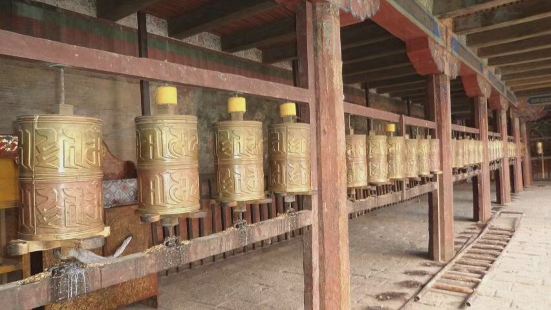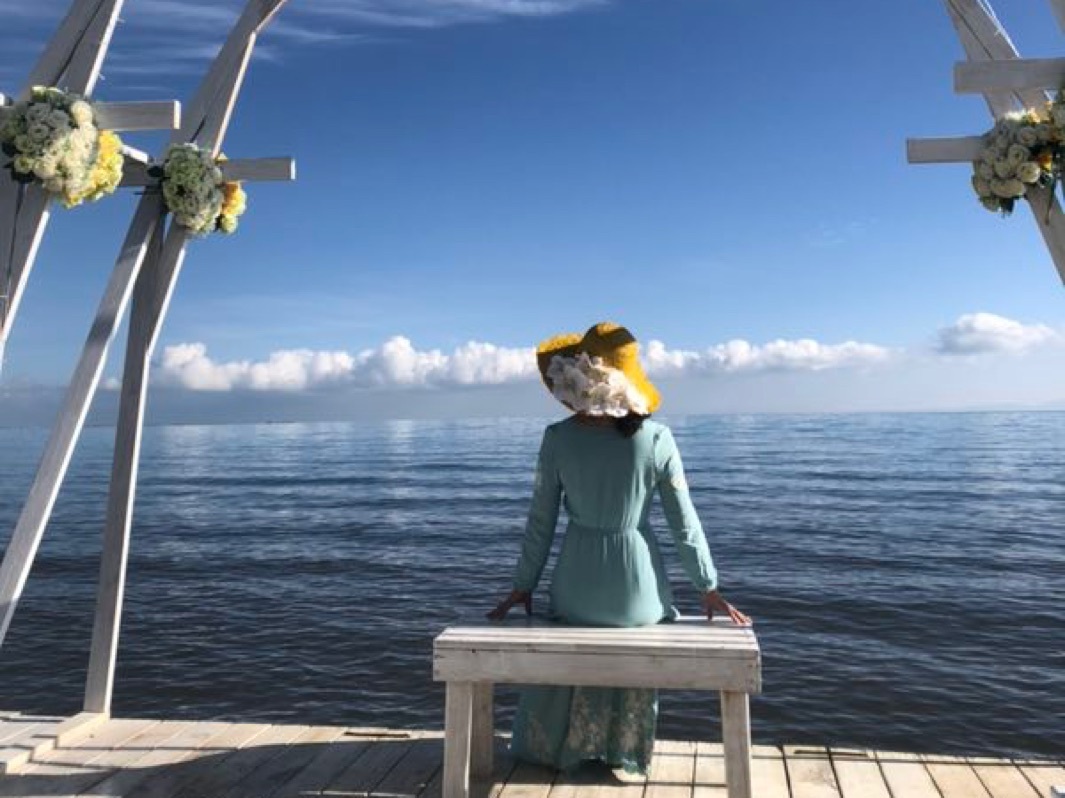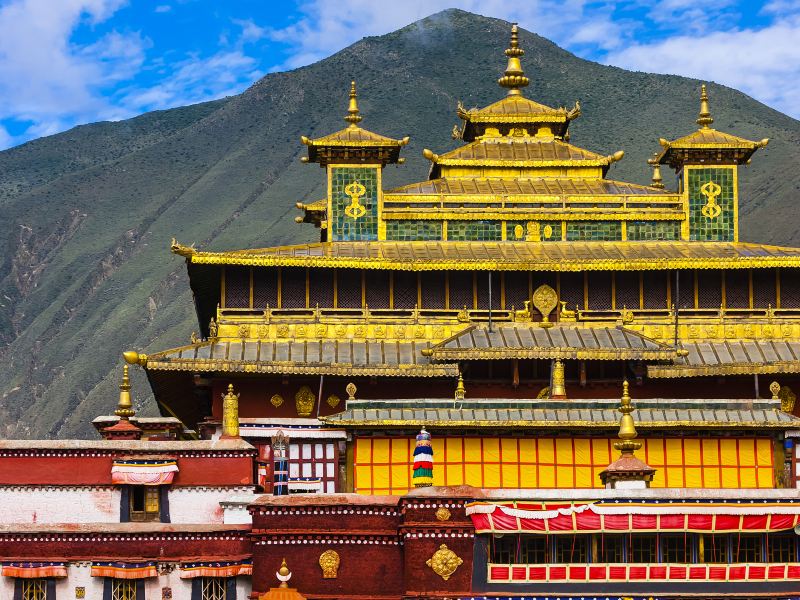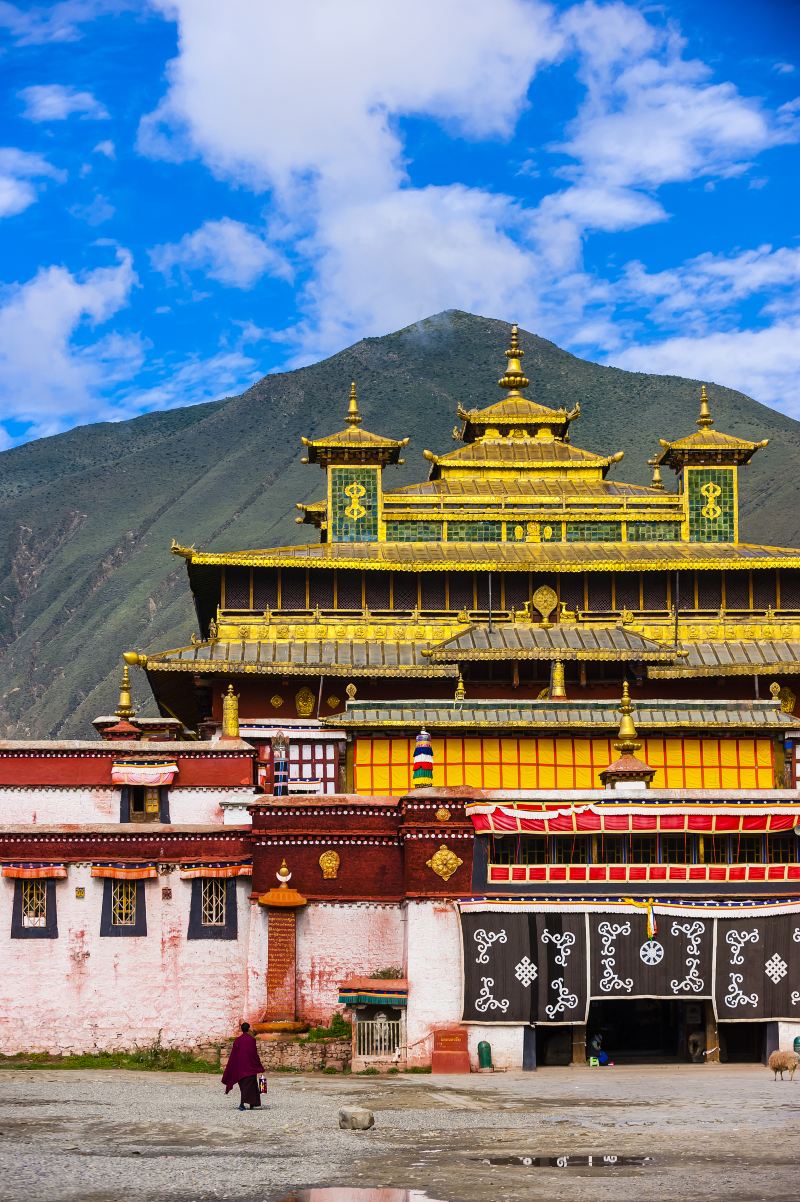
5/5
桑耶寺不大,人少,接受心灵的洗涤,极具西藏特色,了解藏族文化的好地方,非常虔诚的殿堂,清净!感觉非常不错,值得推荐给大家! gz当地向导伊妹儿
gz当地向导伊妹儿4




Samye Monastery is located at the foot of Haburi Mountain in Zhanang County, Shannan Region. It is the first monastery in Tibet where monks ordained monks ordained as well as the first monastery in the history of Tibetan Buddhism with all "Buddha, Dharma and Monk". It is called "a masterpiece in the history of architecture". . The architecture of the temple is laid out according to the Buddhist cosmology. The main hall has three styles of Tibetan, Han and Indian, so Samye Temple is also called Sanxiang Temple. Samye Monastery is based on the Udapo Monastery built in Magadha by the ancient Indian Brahman Dynasty. It was led by Guru Rinpoche and took 12 years to build. Legend has it that when it was first built, Chisong Dezan was eager to know the scene after the completion, so Padmasambhava conjured the illusion of the temple from his palm. , "Unthinkable"), and later took this exclamation as the name of the temple. Samye Temple has been expanded and repaired over the past dynasties, covering an area of more than 4,900 square meters. Around the main hall, you can see the eight small continents, the sun and the moon hall and the four white, black, green and red towers, which are magnificent in scale. In the early morning or evening, you can climb to the top of Haburi Mountain next to Samye Monastery, overlooking the panoramic view of Samye Monastery and the Brahmaputra River. The scenery is infinite. The whole temple of Samye Monastery faces south and consists of two major parts: the central hall and the surrounding cloisters. The layout of the temple is designed according to the structural layout of the "Great Thousand World" in the Buddhist scriptures and built according to the mandala of Tantra. With Wuzi Hall as the main body, it represents Mount Xumi, the center of the world. The four halls around the hall represent the four continents and eight small continents in the Four Aral Seas. The Sun and Moon Halls represent the Sun and Moon Halls in the universe, and the temple walls represent the world. The surrounding iron mountain; the main hall is surrounded by four red, white, green and black pagodas to subdue all evil spirits and demons and prevent the occurrence of natural and man-made disasters. There is a gate on each side of the wall, and the east gate is the main gate. The Wuzi Hall and the corridors of the corridor are full of murals. In addition to the conventional themes, there are also well-known "Tibetan History" murals on the corridors in the middle of the wall. The paintings record that from the ancient legend of the Rakshasa woman and the god monkey to combine to breed Tibetans, it has been Go to Tsongkhapa to found Gelugpa. The frescoes are 92 meters long, exuberant and magnificent, and are known as the "History of Painting" in Tibet. In addition, on the first and second floors of the main hall, there are "Samye Monastery Historical Records", and on the south side of the second floor there are murals such as "Lotus Life Biography", all of which are exquisite and must not be missed. On the south side of the East Gate, there is a square-pillared stone tablet in the Chisong Dezan period, with a simple style and no decorations. In 779, Trisong Detsen made an oath to make offerings to Samye Monastery. In the porch of the main hall, there is also a large bell cast by Princess Chisong Dezan and the prince. The monastery is surrounded by lush trees, lush forests, lingering rivers and canals, and black-necked cranes leisurely foraging for food.